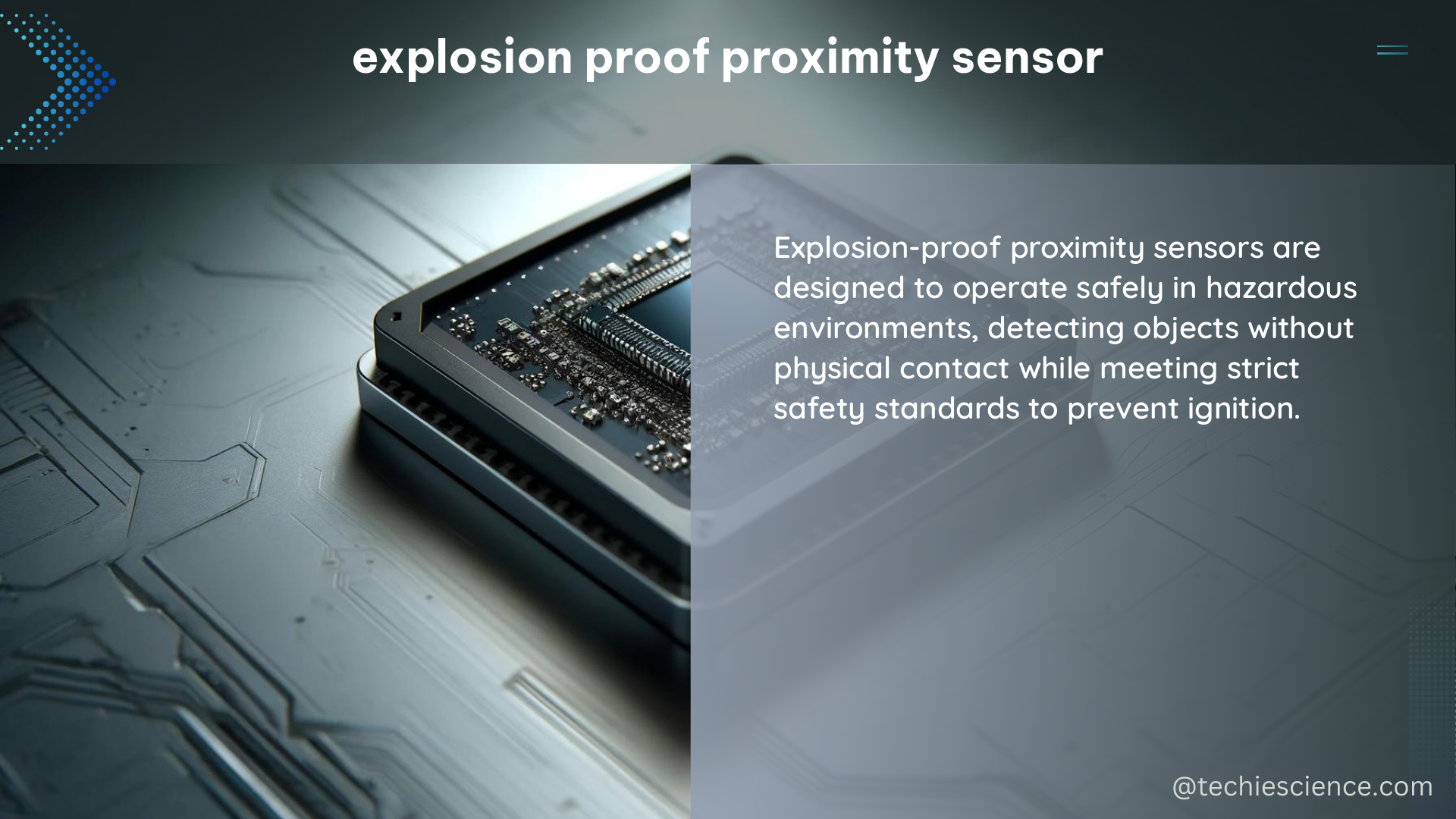Explosion proof proximity sensors are essential for detecting metallic objects in potentially explosive environments. These sensors are designed to operate safely in hazardous areas, ensuring reliable position and end position detection. This article provides a detailed analysis of explosion proof proximity sensors, focusing on technical specifications, hands-on details, and a DIY guide.
Technical Specifications
Measuring Range
Explosion proof proximity sensors have a measuring range of 1 mm to 50 mm, depending on the specific model. The sensing range can be further categorized as follows:
- Short-range sensors: 1 mm to 10 mm
- Medium-range sensors: 10 mm to 30 mm
- Long-range sensors: 30 mm to 50 mm
The sensing range is influenced by factors such as the size and material of the target object, as well as the sensor’s design and construction.
Environmental Ratings
These sensors are typically rated for ambient temperatures ranging from -25°C to +80°C and are certified for a maximum surface temperature of +85°C. This wide temperature range ensures reliable operation in various industrial environments.
The sensors also have the following environmental protection ratings:
| Rating | Description |
|---|---|
| IP66 | Dust-tight and protected against powerful water jets |
| IP67 | Dust-tight and protected against the effects of temporary immersion in water |
| IP68 | Dust-tight and protected against the effects of continuous immersion in water |
These ratings ensure the sensors can withstand harsh environmental conditions, such as exposure to dust, water, and other contaminants.
Explosion Protection
Explosion proof proximity sensors are ATEX certified, ensuring safe operation in hazardous areas. They are marked as:
- II 1G Ex ia IIB/IIC T6 Ga
- II 1D Ex ia IIIC T85°C Da
This indicates compliance with the following international explosion protection standards:
- II 1G: Suitable for use in Zone 0 (high risk) areas with gas hazards
- Ex ia: Intrinsically safe protection
- IIB/IIC: Suitable for use with gas groups IIB and IIC
- T6 Ga: Maximum surface temperature of 85°C
- II 1D: Suitable for use in Zone 20 (high risk) areas with dust hazards
- Ex ia IIIC: Intrinsically safe protection for combustible dust
- T85°C Da: Maximum surface temperature of 85°C
These certifications ensure the sensors can be safely used in potentially explosive environments.
Supply Voltage
Explosion proof proximity sensors operate on a supply voltage according to the NAMUR standard, typically ranging from 7.7 Vdc to 9 Vdc, with a maximum ripple of 10%. This ensures consistent and reliable power delivery to the sensor.
Consumption
The consumption of these sensors at 8.2 V with Rx = 1000 Ω is typically low, ensuring energy efficiency. The exact power consumption values can vary depending on the specific sensor model, but they are generally in the range of 5 mA to 15 mA.
Cable Output
Explosion proof proximity sensors often have cable outputs, allowing for easy integration into existing systems. The cable length can range from 2 meters to 10 meters, depending on the application requirements.
DIY Guide

To build an explosion proof proximity sensor system, follow these steps:
-
Select the Sensor: Choose an explosion proof proximity sensor with the appropriate measuring range and environmental ratings for your application. Consider factors such as the size and material of the target object, the ambient temperature, and the presence of dust or other contaminants.
-
Power Supply: Connect the sensor to a power supply that meets the NAMUR standard for voltage and ripple. Ensure the power supply is rated for use in hazardous areas and can provide the necessary current to the sensor.
-
Cable Connection: Connect the sensor’s cable output to the control system or PLC. Ensure the cable routing and termination are done in accordance with the explosion protection requirements.
-
Programming: Program the control system or PLC to interpret the sensor’s output as a high or low digital signal, based on the proximity of a metallic object. This may involve configuring input/output settings, setting up logic gates, or developing custom software.
-
Testing: Test the system in a controlled environment to ensure reliable operation and safety in hazardous areas. Verify the sensor’s response to the presence and absence of metallic objects, and ensure the system meets all relevant safety standards and regulations.
By following these steps, you can build a reliable and safe explosion proof proximity sensor system for your industrial applications.
References
- Baumer Explosion Proof Proximity Sensors
- Pepperl+Fuchs Explosion Proof Proximity Sensors
- Explosion Proof Proximity Sensor Installation and Operation
- DirectIndustry Explosion Proof Proximity Sensor Overview
- Scientific Article on Explosion Proof Proximity Sensors

The lambdageeks.com Core SME Team is a group of experienced subject matter experts from diverse scientific and technical fields including Physics, Chemistry, Technology,Electronics & Electrical Engineering, Automotive, Mechanical Engineering. Our team collaborates to create high-quality, well-researched articles on a wide range of science and technology topics for the lambdageeks.com website.
All Our Senior SME are having more than 7 Years of experience in the respective fields . They are either Working Industry Professionals or assocaited With different Universities. Refer Our Authors Page to get to know About our Core SMEs.